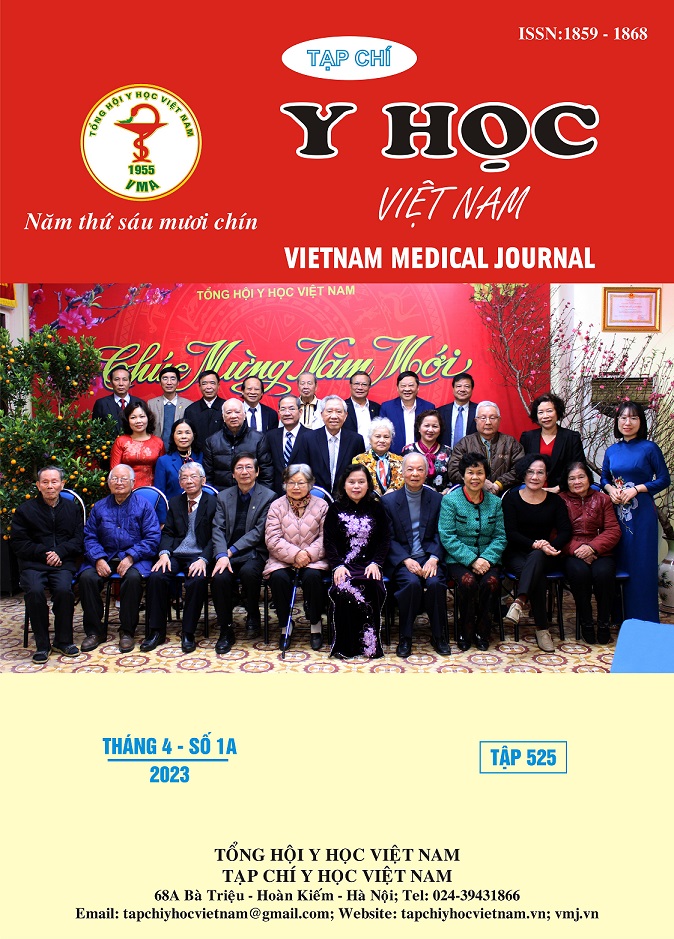ADJUSTING VANCOMYCIN DOSAGE THROUGH MONITORING DRUG CONCENTRATION WITH AUC TARGET BASED ON BAYESIAN ESTIMATION IN SURGICAL INTENSIVE CARE PATIENTS, VIET DUC HOSPITAL
Main Article Content
Abstract
Objective: To analyze the results of implementing vancomycin dose adjustment based on the estimated AUC value by Bayes method according to the vancomycin TDM procedure applied on surgical ICU patients. Method: Prospective study, through the cooperation between clinical pharmacists, ICU doctors and nurses at the Intensive Care Unit 2, Anesthesia and Surgical Intensive Care Center, Viet Duc Hospital from December 2021 to June 2022. Patient information and related parameters are collected daily. Based on the results of the vancomycin concentration in the patient's blood, the AUC value was estimated by Bayesian method on SmartdoseAI software. The vancomycin dose was adjusted to achieve the target AUC 400-600 mg. h/L. Results: When using the recommended regimen with initial maintenance dose (60.3%), only 36.9% of patients had AUC values in the range of 400-600 mg.h/L. After the dose adjustment, the percentage of patients reaching the PK/PD target increased to 62.5%. The ability to estimate AUC values using the initial pharmacokinetic model was relatively low (43.48% deviation) but was significantly improved when Bayesian estimates were applied based on drug concentration data in blood (deviation 7.5%). Conclusions: Using vancomycin TDM has improved the likelihood of achieving AUC target. The Bayesian method has the ability to estimate the AUC value relatively accurately, bringing many conveniences and this is suitable for clinical practice on surgically ICU patients.
Article Details
Keywords
AUC, Bayesian, Viet Duc Hospital, intensive care, TDM, vancomycin
References
2. Lê Thị Minh Hằng và cộng sự (2022), "Phân tích đặc điểm sử dụng vancomycin trên bệnh nhân nặng điều trị hồi sức tích cực tại Bệnh viện Hữu nghị Việt Đức", Tạp chí Y học Việt Nam, 518(2), pp. 62-66.
3. Cunio C. B., Uster D. W., et al. (2020), "Towards precision dosing of vancomycin in critically ill patients: an evaluation of the predictive performance of pharmacometric models in ICU patients", Clin Microbiol Infect, 27(5), pp. 783.E7-E14.
4. Guo Y., Song G., et al. (2020), "Prevalence and Therapies of Antibiotic-Resistance in Staphylococcus aureus", Front Cell Infect Microbiol, 10, pp. 107 DOI: 10.3389/ fcimb.2020.00107.
5. Hanberger H., Walther S., et al. (2011), "Increased mortality associated with methicillin-resistant Staphylococcus aureus (MRSA) infection in the intensive care unit: results from the EPIC II study", Int J Antimicrob Agents, 38(4), pp. 331-5.
6. Katip W., Jaruratanasirikul S., et al. (2016), "The pharmacokinetics of vancomycin during the initial loading dose in patients with septic shock", Infect Drug Resist, 9, pp. 253-260.
7. Lambden S., Laterre P. F., et al. (2019), "The SOFA score-development, utility and challenges of accurate assessment in clinical trials", Critical Care, 23(1), pp. 374.
8. Masich Anne M, Kalaria Shamir N, et al. (2020), "Vancomycin Pharmacokinetics in Obese Patients with Sepsis or Septic Shock", Pharmacotherapy: The Journal of Human Pharmacology and Drug Therapy, 40(3), pp. 211-220.
9. Matzke GR, Zhanel GG, et al. (1986), "Clinical pharmacokinetics of vancomycin", Clinical pharmacokinetics, 11(4), pp. 257-282.
10. Rybak M. J., Le J., et al. (2020), "Therapeutic monitoring of vancomycin for serious methicillin-resistant Staphylococcus aureus infections: A revised consensus guideline and review by the American Society of Health-System Pharmacists, the Infectious Diseases Society of America, the Pediatric Infectious Diseases Society, and the Society of Infectious Diseases Pharmacists", Am J Health Syst Pharm, 77(11), pp. 835-864.


